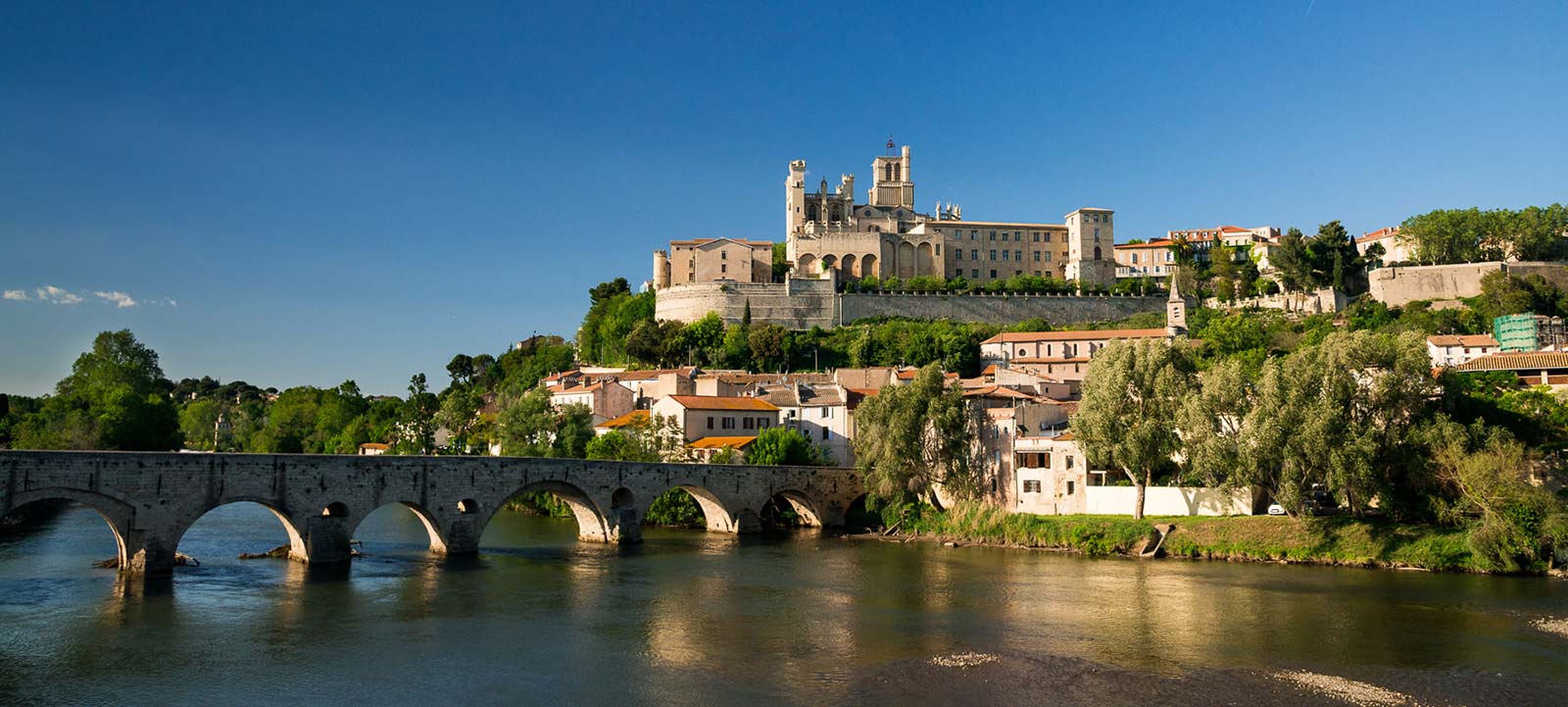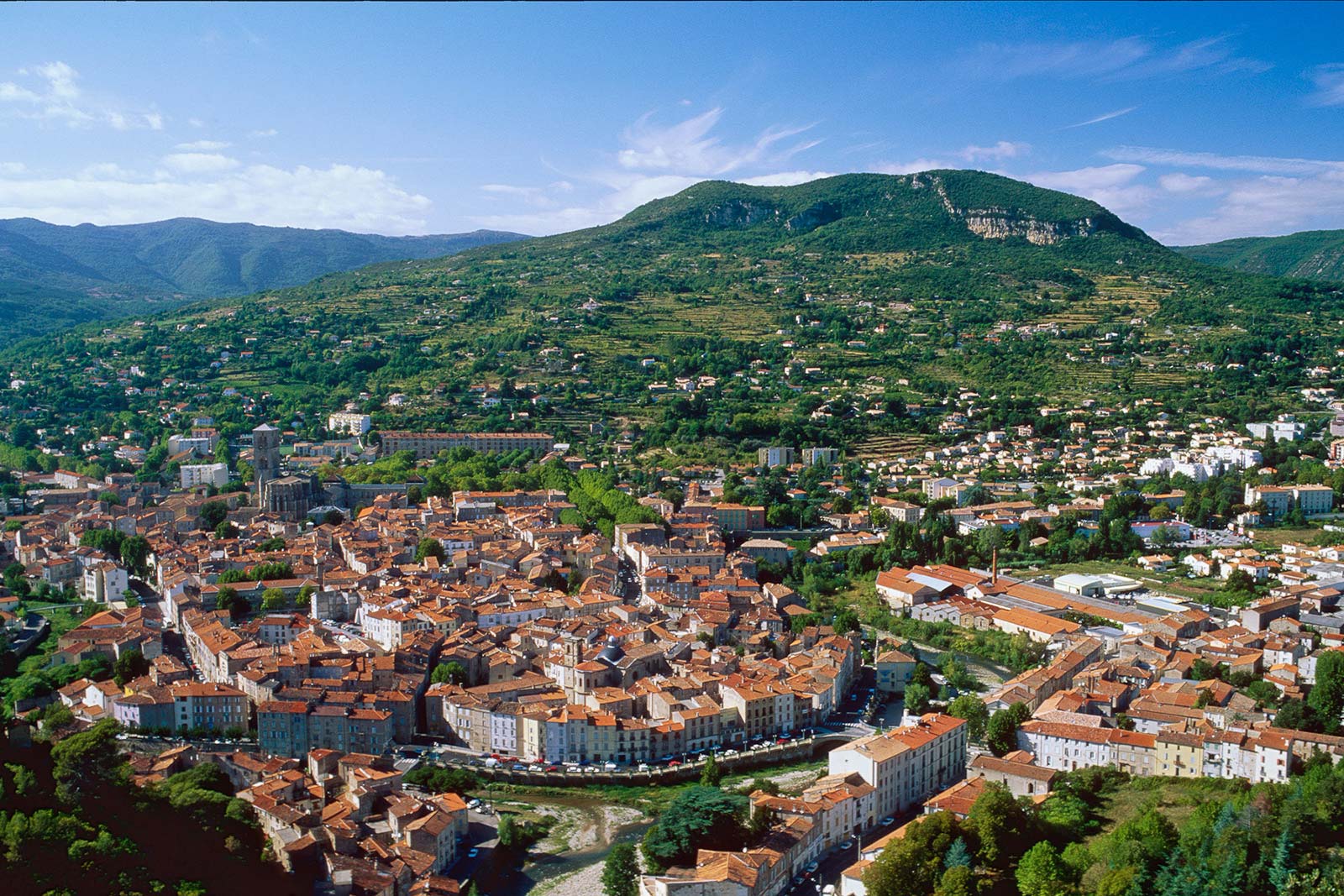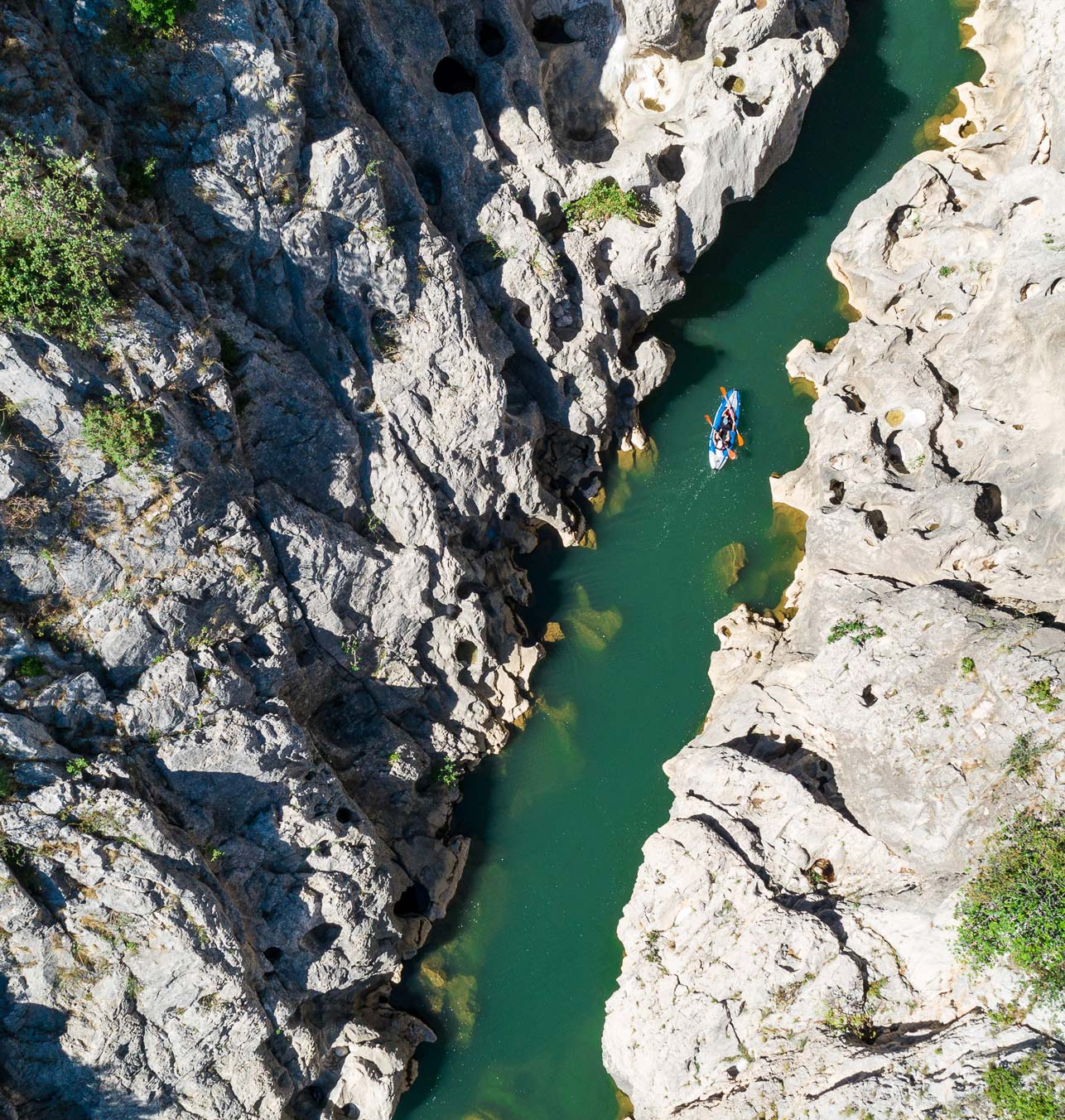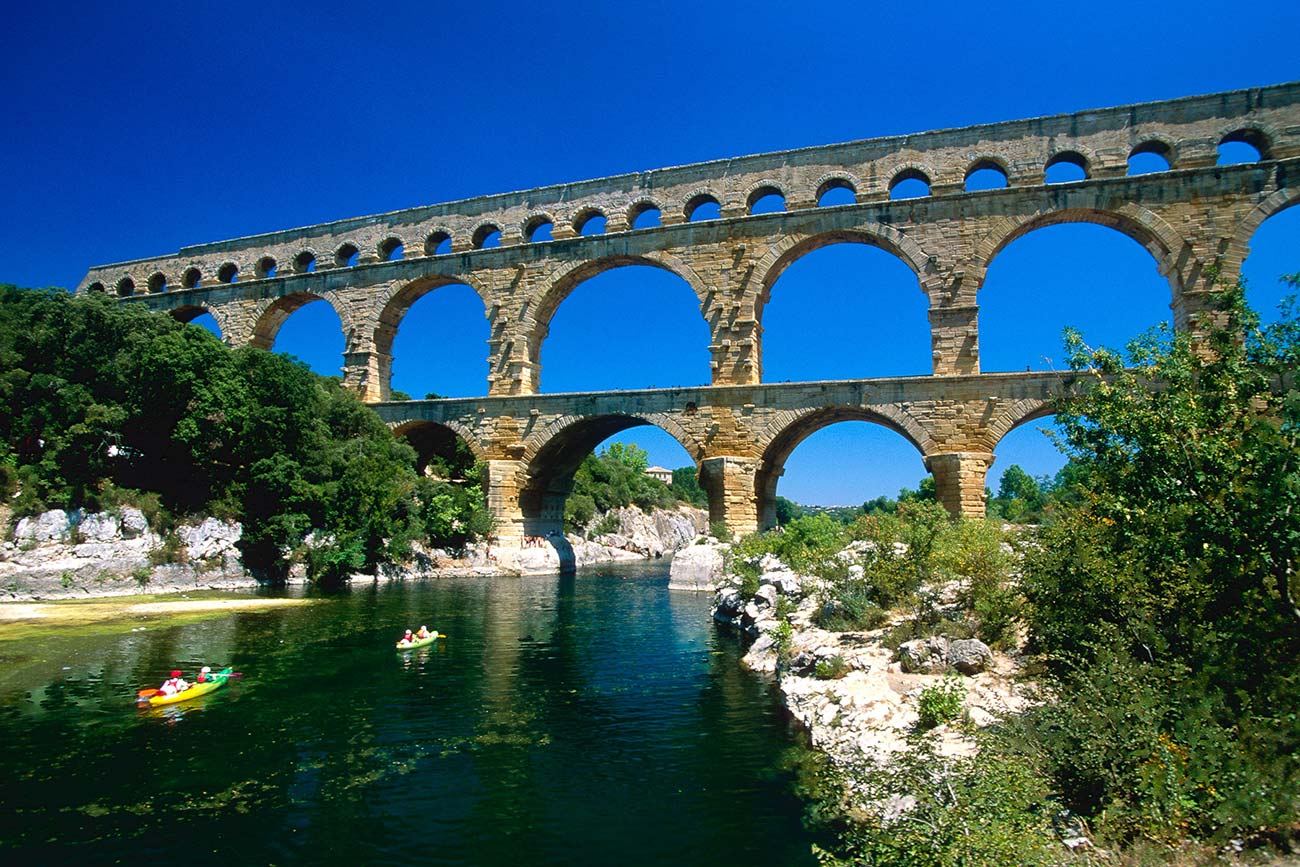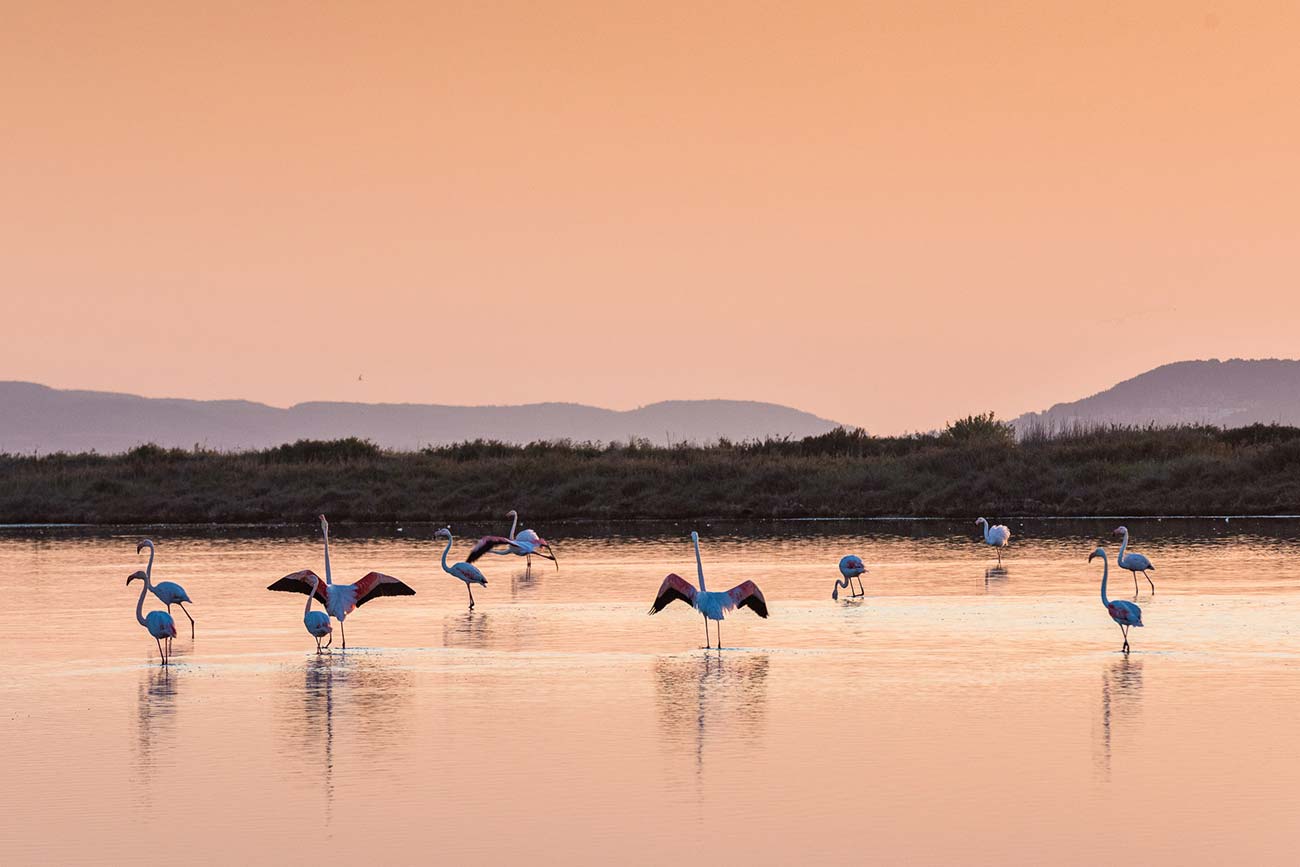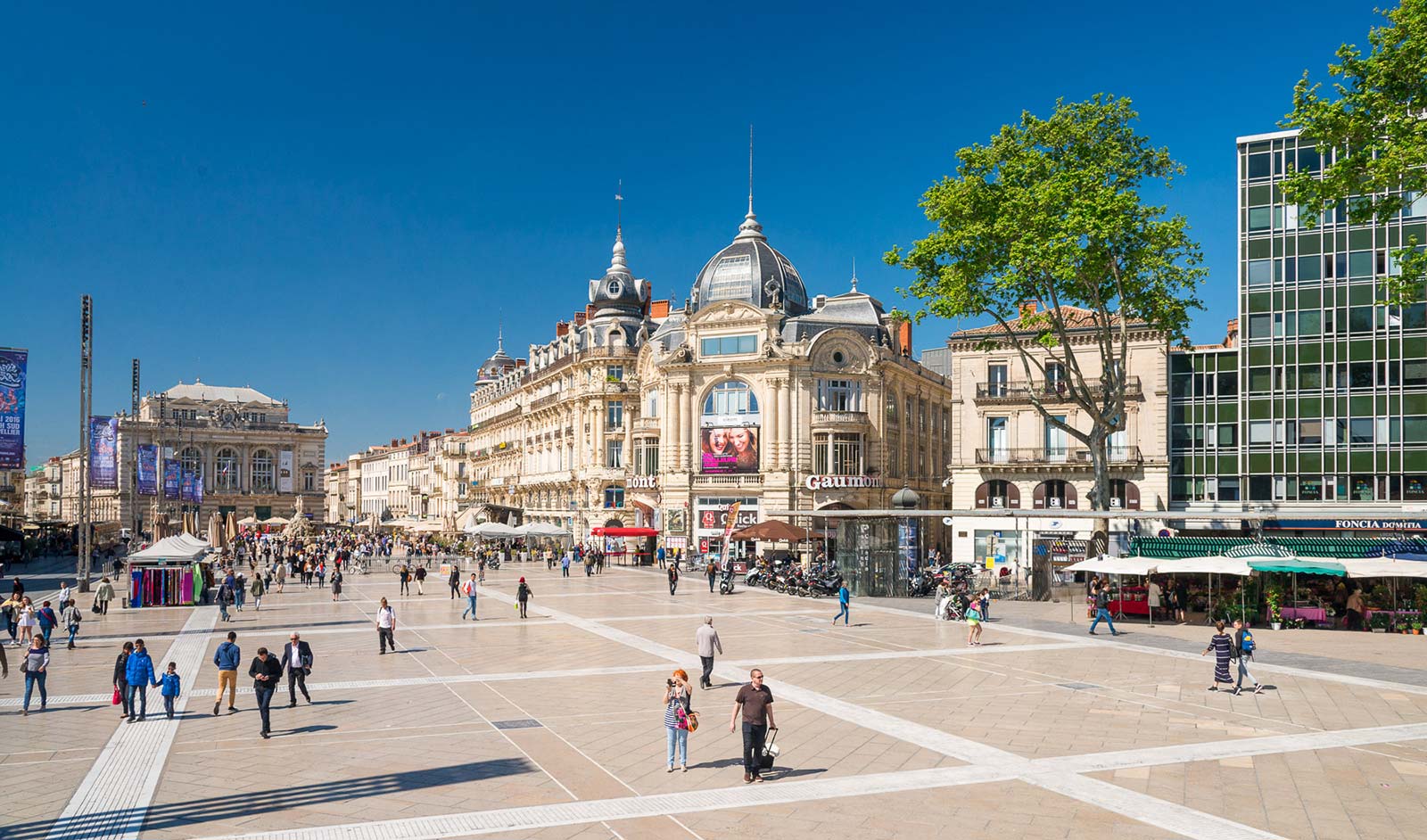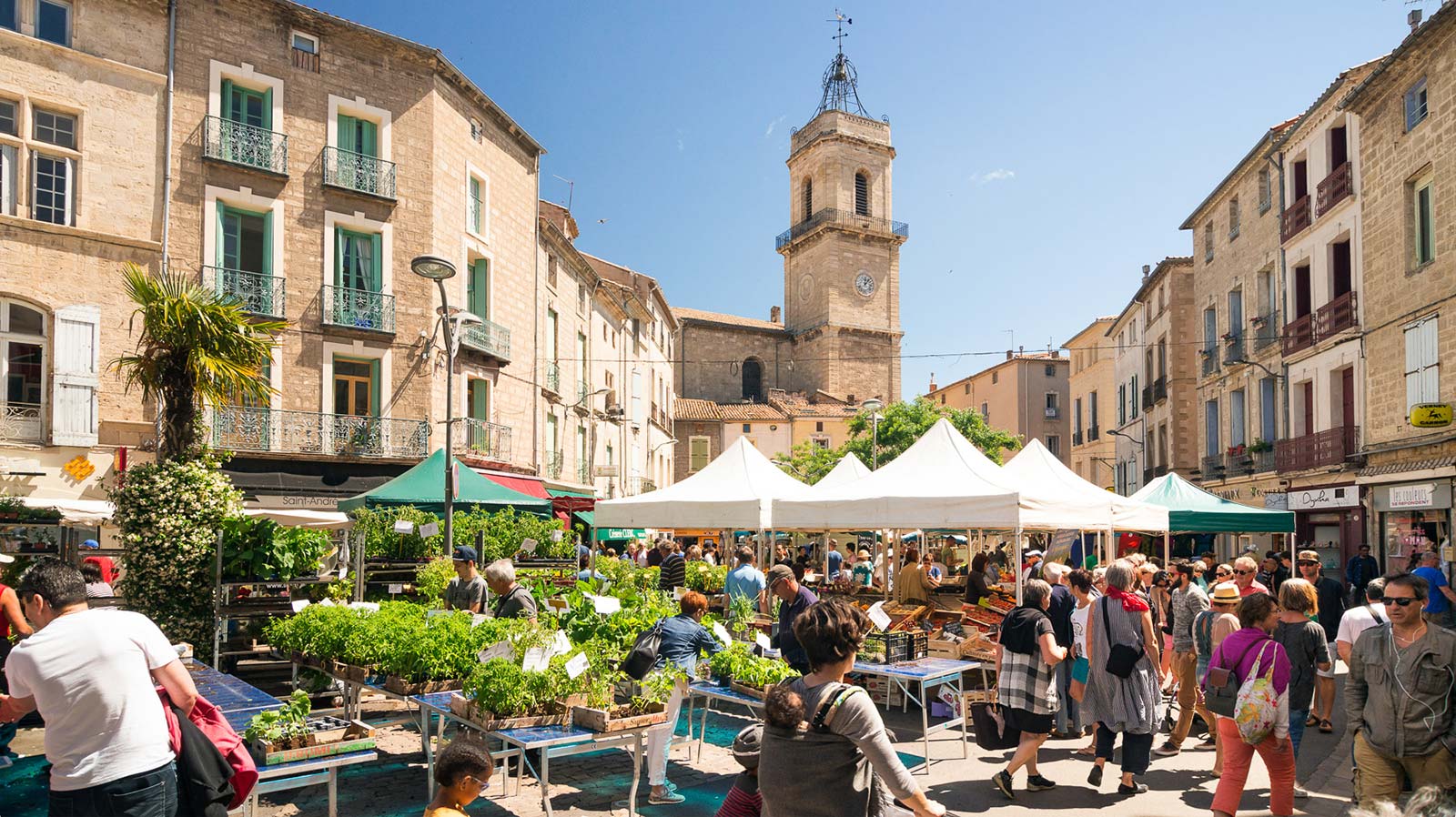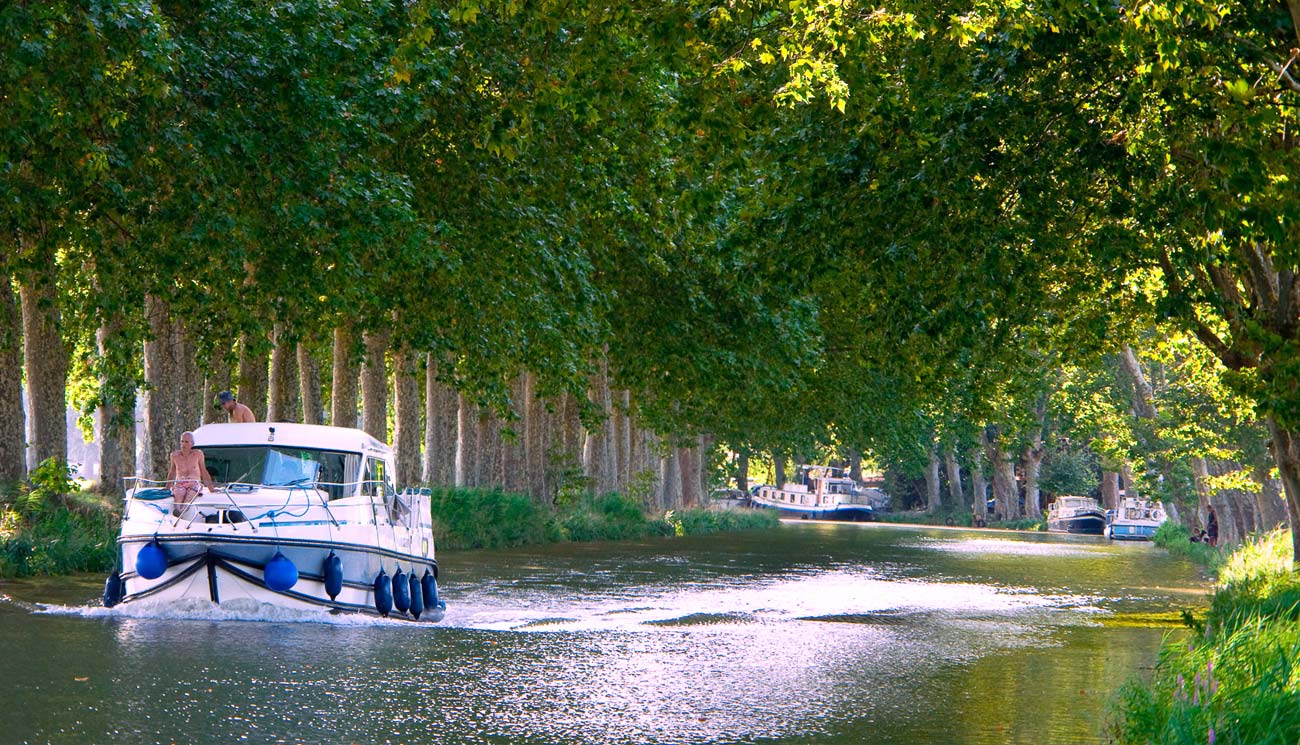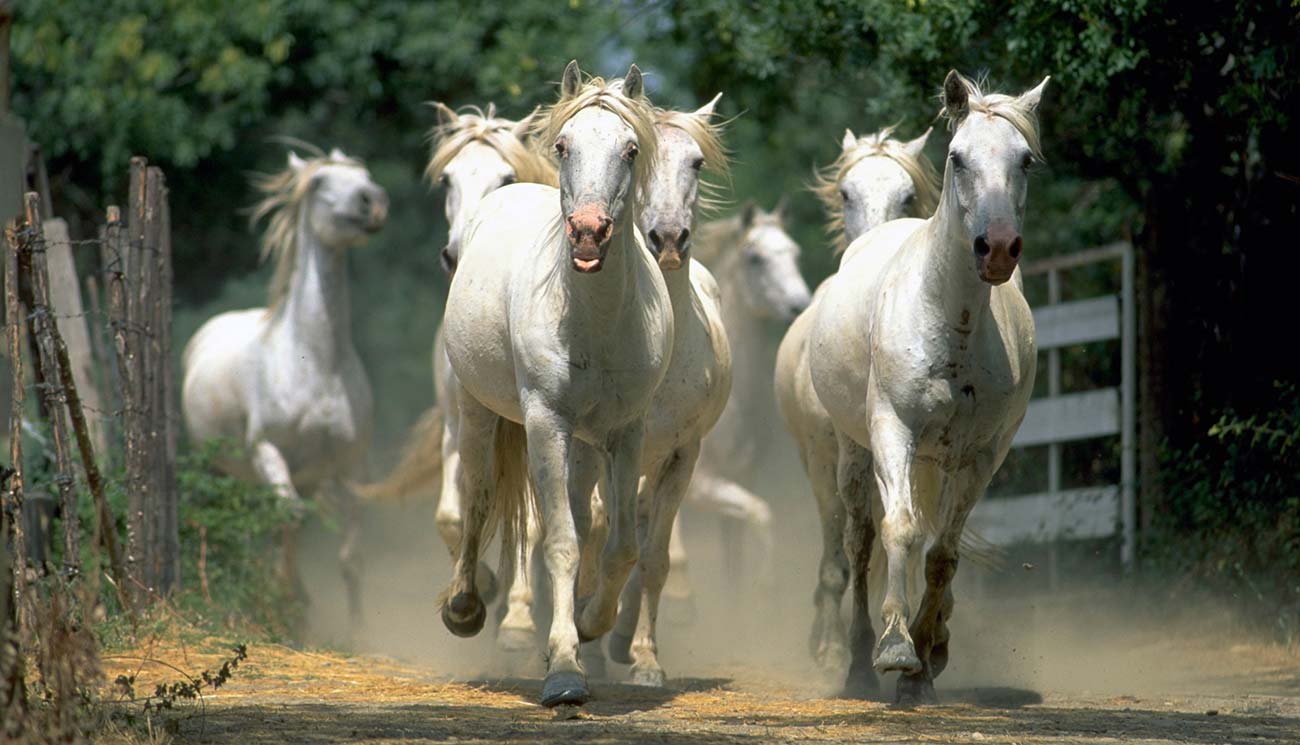Béziers, where the Canal du Midi meets a medieval town
In the town where Pierre-Paul Riquet was born, you’ll be able to stroll along streets named after this builder of the Midi Canal, as well as visiting one of the nearby brasseries before walking in the famous gardens, the “Jardin des Poètes”.
A little higher up, visit the old part of Béziers to admire its medieval architecture. Be sure to visit the cathedral and enjoy the impressive view over the 12th-century bridge from the upper part of the town.
